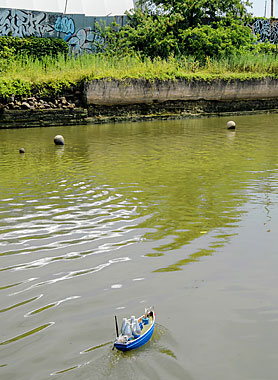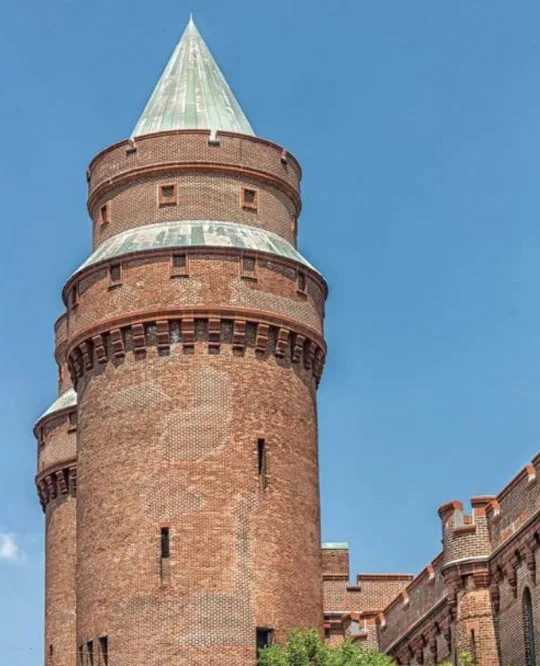A fleet of remote-controlled, camera-equipped miniature boats got up close and personal with the toxic — and surprisingly clear — Gowanus Canal on Saturday when canal cuddlers celebrated the waterway as they collected information about what lurks within its murky depths.
The data-collecting mini-vessels were launched into the oil-slicked waterway filled with hazardous heavy metals, raw sewage, cancer-causing chemicals and even gonorrhea, by the Metropolitan Waterfront Alliance, a coalition of harbor-loving groups that wants to let the public explore the fetid canal from above and below.
More than 100 people got the chance to navigate the boats equipped with video cameras and water quality sensors during the day-long event dubbed the “Gowanus Voyage” hosted by the Newtown Creek Armada and a team of researchers from Polytechnic Institute of New York University that created an aquatic robot to collect data from Brooklyn’s nautical purgatory.
“It’s raising awareness about the Gowanus Canal and getting people involved in understanding the pollution and the cleanup there,” said Sarah Nelson Wright, one of the artists behind the Newtown Creek Armada, a public art project.
The group created the project last year when it launched the same high-tech boats to record what lies below the filthy Newtown Creek, another filthy waterway that the federal government has declared a “Superfund” site — meaning it is in the process of getting cleaned up with money provided by the persons or companies that polluted it.
The radio-controlled vessels’ underwater cameras transmitted their recorded images to an onshore-monitor for the spectators’ viewing pleasure. People were also able to see how dirty the water is based on the data from the water quality sensors. According to experts, the water was clearer than normal.
“It was a pretty good day for the canal,” said Jeffrey Laut, a grad student at Polytechnic Institute of New York University. Laut, who said the water wasn’t murky, has been assessing the canal since October when his team deployed the aquatic robot named Brooklyn Atlantis into the waterway.
“Depending on what day you go, the canal can be disgusting or it can be crystal clear,” said Laut, who added that the data from the robot shows that the 1.8-mile waterway is the filthiest right after a heavy rain because of the raw sewage that gets spewed into it.
Laut said that the robot has captured images of garbage, muck, slime, and even wildlife, such as crabs and herons, that he says typically flock to the waterway. But he hasn’t made any breakthrough on the canal’s case of gonorrhea.
“I don’t know how to test for that,” said the engineer. “I don’t know if there is a gonorrhea sensor.”
On Saturday people got to pilot the robot, which Laut said he hopes will be collecting data on the canal for the long-term. The robot is equipped with sensors to monitor the water’s pH levels, oxygen levels, temperature, air quality and salinity.
Wright said that the day was about “engaging people with what’s going on in terms of pollution in the canal” in a fun way.
The federal government is expected to reveal its finalized half-billion-dollar cleanup plan for the canal this summer. The cleanup is expected to go until 2020.
Reach reporter Natalie Musumeci at nmusumeci@cnglocal.com or by calling (718) 260-4505. Follow her at twitter.com/souleddout.






























